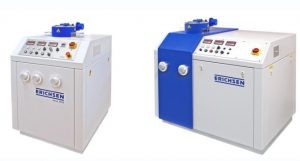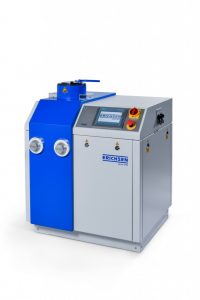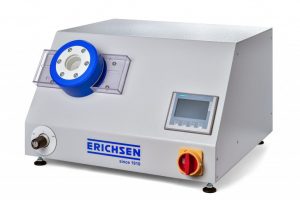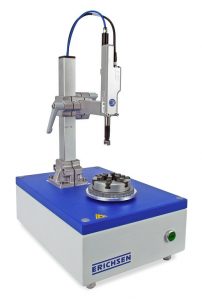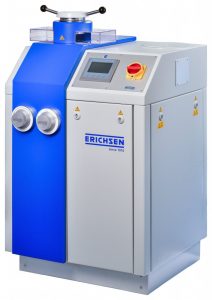
The special feature of Model 146-60 & Model 146-100 are the increased drawing speeds of the drawing punch which, in addition to the normal drawing speed range that can be adjusted, in an infinitely variable manner and independent of load. This is achieved by using a separate oil circuit, fed by a pump with high volumetric displacement. Contrary to the high speed attachment based on a nitrogen accumulator, here a constant drawing speed behaviour is guaranteed over the total displacement of 150 mm. As to the technical design and the options available, including PC control and proportional valve technique, this machines are similar to Models 145.
Application: This Sheet Metal Testing Machine is not only ideal for the effortless, quick and accurate performance of all significant known deep drawing tests for ferrous and non-ferrous metals, it is also designed for a large number of additional technological investigations like the ERICHSEN Cupping Test and the ERICHSEN Deep Drawing Cup Test.
Relevant attributes are: Square Cup Test (40 x 40 mm or 70 x 70 mm), Bore Expanding Test (ISO 16630), Determination of the Forming Limit Curves (FLC), LDH Test Deep Drawing Tests with Blankholder Quick Release (for Earing Test), Deep Drawing Tests with Preselected Punch Stroke, Deep Drawing Test at High Temperatures up to 550 °C / 700 °C, Bulge Test in accordance with ISO 16808, ERICHSEN Cupping Test for Lacquer and Paint in accordance with DIN ISO 1520, Stamping Lacquer Test and Deep Drawing Cup Test on Coil Coatings.
Special Requirements on request. Standards: ISO 8490, EN 14-58, EN 14-67, EN ISO 20482, JIS Z-2247, DIN EN 1669, ISO 11 531, JIS Z 2249, GB/T 15825, ISO 12004, ISO 16808


